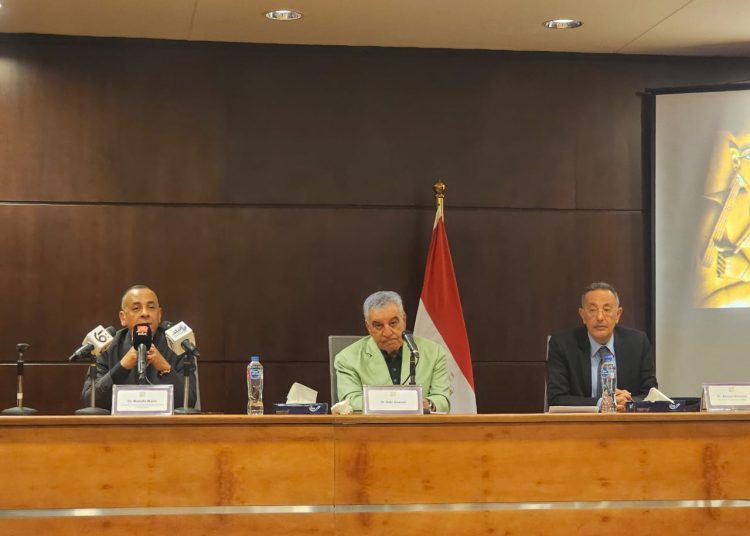Some 182 objects from the Kingdom of Pharaoh Ramses II including his coffin will be on display in a six-month exhibition in Sydney, Australia, starting November 18.
Entitled ‘Ramses and the Gold of the Pharaohs’, the exhibition will be held at the Australian Museum, established in 1827.
It is the fourth stop after it was held in Paris, Houston and San Francisco. Each of these stops lasts for six months.
Supreme Council of Antiquities Secretary General Mostafa Waziry said that the exhibition when it was held in Paris attracted 817,000 visitors.
He expected the same turnout in Sydney.
“So far, there are 100,000 tickets sold online,” he told a press conference on Monday at the National Museum of Egyptian Civilisation (NMEC) in Fustat.
“Sydney made a great propaganda for the event,” he added.
In July, Waziry was there to inspect the exhibition halls, to check their readiness and the extent to which security and precautionary measures are applied in them to ensure the safety of the artefacts.
Waziry gave interviews for several Australian media outlets. He said that these interviews were a great promotion for the exhibition before its opening.
It is the largest cultural exhibition to visit Australia in a decade, according to the website of the Australian Museum.
Ramses II (1279-1213 BC) was the third ruler of the Nineteenth Dynasty. He is considered one of the greatest warrior pharaohs in the era of the New Kingdom. He ruled Egypt for 66 years, and was an important military leader known for his extensive building and colossal statues of him found all over Egypt.
The sarcophagus has great status as it was discovered in the cache of Deir el-Bahari in 1881. It is made of cedar wood and painted yellow. It represents the king in human form with his hands crossed, holding the insignia of government, a sceptre and a whip, and he has a braided false beard.
The exhibition includes artefacts and ornate golden treasures such as one-of-a-kind relics, such as sarcophagi, animal mummies, magnificent jewellery, spectacular royal masks, exquisite amulets – many of which have never left Egypt before.
“The insurable value of the exhibition is one billion dollars,” Waziry said.
He added after Sydney, the exhibition will fly to Germany.
Archaeologist Zahi Hawass talked about his ongoing work in excavating the tomb of King Ramses II. He added that it is considered one of the larger tombs in the Valley of the Kings.
He said the site has been subjected over the past centuries to a number of thefts and heavy rains which caused accumulation of dirt that completely blocked the internal corridors and rooms of the tomb.
After carrying out cleaning work for the corridors and rooms, Hawass said, the Egyptian mission was able to reveal the secrets of this tomb, its method of construction, design and inscriptions.
He expected to be open to the public after two years.
Ambassador of Singapore Dominic Goh, NMEC Managing Executive Director Ahmed Ghoneim and Ron Tan, Executive Chairman & Group CEO of Cityneon Holdings, the brain trust behind the exhibition, attended the press conference.






Discussion about this post